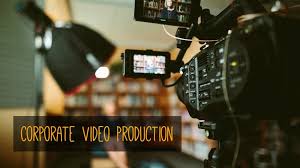Storyboarding and Scriptwriting for Videos








Storyboarding and Scriptwriting for Videos
Storyboarding and scriptwriting are fundamental components of the video production process. They provide the creative and logistical framework needed to bring a concept to life. Here’s why they are so crucial and how they contribute to successful video production:
1. The Role of Scriptwriting
- Establishes a Clear Narrative: The script serves as the backbone of your video, outlining the story, dialogue, key messages, and overall structure. Whether it’s a short commercial, corporate training video, or a film, the script ensures that the story flows logically and aligns with your goals.
- Defines Tone and Style: A well-crafted script sets the tone and style for the video, whether it’s formal, humorous, conversational, or dramatic. This helps maintain consistency throughout production and ensures that the video resonates with its target audience.
- Optimizes Content Delivery: Scripts enable you to focus on delivering messages concisely and effectively, avoiding unnecessary fluff. This is especially important in social media content, where brevity is key, or in training videos where clarity is paramount.
- Provides a Blueprint for Dialogue and Action: The script outlines what each character or narrator will say and do. This eliminates confusion during filming, reduces the need for improvisation, and ensures that the intended messages are conveyed accurately.
- Guides Visual and Audio Elements: The script often includes cues for visuals, music, sound effects, and other audio elements. These instructions help align the creative vision and ensure that each component supports the story.
2. The Role of Storyboarding
- Visualizes the Script: A storyboard takes the written script and transforms it into a visual outline of the video. Each scene or key moment is sketched out, showing how it will appear on screen. This helps everyone involved understand the intended visual style, composition, and transitions.
- Helps Plan Shots and Angles: Storyboarding allows the director and camera crew to visualize how scenes will be shot, including camera angles, movements, and framing. This reduces ambiguity and provides clear guidance for cinematography during production.
- Identifies Potential Issues Early: Storyboarding can reveal potential challenges or inconsistencies with pacing, transitions, or visual flow before production begins. Identifying and addressing these issues in the planning stage saves time, effort, and costs during shooting and editing.
- Aligns Creative Teams: The storyboard serves as a shared reference for the entire production team—directors, camera operators, lighting technicians, set designers, and more. It ensures everyone is aligned on the creative vision, preventing miscommunication and wasted effort.
- Facilitates Efficient Production: Storyboards break down the production process into manageable scenes or shots, helping teams stay organized and efficient on set. This can be particularly valuable for large projects or when working with tight deadlines and budgets.
3. Benefits of Combining Scriptwriting and Storyboarding
- Maintains Focus on Objectives: Together, the script and storyboard help keep the project focused on the core message or story being conveyed. They provide a clear framework to work within, minimizing the risk of deviating from the initial goals.
- Improves Collaboration and Communication: A shared script and storyboard allow all team members to contribute ideas, provide feedback, and discuss the creative direction before production begins. This collaborative process leads to a more refined and cohesive final product.
- Minimizes Production Costs and Errors: By having a detailed plan of the narrative and visual elements, unnecessary shoots, retakes, and production delays can be avoided. This is especially important for projects with limited budgets.
- Enhances Creativity: Planning through scripts and storyboards doesn’t stifle creativity; instead, it provides a structured space for creative exploration. You can experiment with scene layouts, transitions, and storytelling techniques during the planning phase before investing resources in production.
4. Storyboarding Techniques and Tips
- Start Simple: Initial sketches don’t need to be polished. Stick figures or basic shapes work as long as they convey the action, composition, and flow.
- Incorporate Notes: Add notes for each panel describing camera movements, scene duration, dialogue snippets, and important actions.
- Focus on Key Scenes: Highlight important shots or transitions that define the story arc and drive the narrative. Not every second needs to be storyboarded; instead, emphasize critical moments.
- Use Digital Tools: There are many digital tools available for storyboarding, such as Storyboarder, Adobe Illustrator, or dedicated storyboarding software. These tools can streamline revisions and offer templates for easy customization.
5. Scriptwriting Best Practices
- Know Your Audience: Tailor the script’s language, tone, and content to the target audience’s preferences and needs.
- Create a Strong Opening: Hook viewers immediately with a compelling opening to capture their attention and encourage them to keep watching.
- Keep it Concise and Engaging: Focus on delivering key messages quickly without losing clarity or impact. Avoid overly complex language or tangential information.
- Structure Your Story: Effective scripts follow a logical structure, often with a clear beginning (introduction of characters or context), middle (conflict, development, or main content), and end (resolution or call to action).
- Incorporate Calls to Action: For promotional or instructional videos, include clear calls to action that guide the audience on what to do next.
Conclusion
Storyboarding and scriptwriting are essential steps in video production that lay the groundwork for a successful project. While the script defines the narrative and dialogue, the storyboard brings the vision to life visually. Together, they ensure that the creative vision is aligned, the message is clear, and the production process is smooth and cost-effective. This preparation enables creators to produce engaging, polished, and impactful videos that resonate with their target audience.

